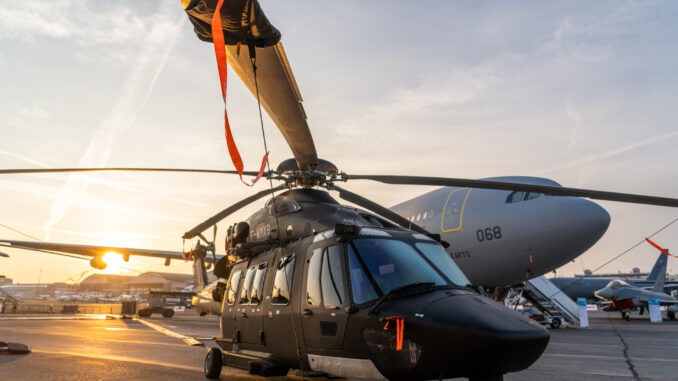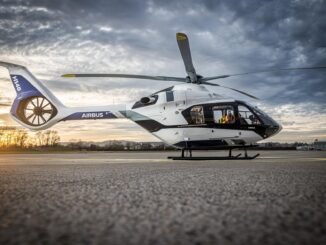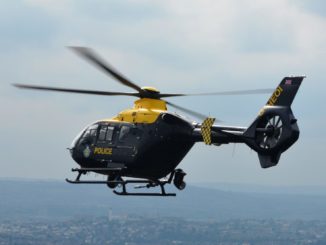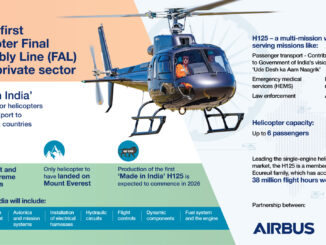
Airbus is set to re-enter the running for a Ministry of Defence (MoD) contract to replace the Puma Helicopter fleet, including plans to build a new Helicopter engineering facility at Broughton in North Wales.
Airbus previously withdrew from the process saying that the tender, worth around £1bn wasn’t attractive enough. Still, an apparent U-turn by Airbus Helicopters’s CEO Bruno Even will now see a revised submission put forward by the European aerospace giant.
The site at Broughton will build a fleet of new Airbus H175M helicopters creating hundreds of skilled local jobs and Airbus will also keep the existing Puma fleet operating for longer through a maintenance programme to reduce costs according to the Telegraph.
Speaking at an event at Oxford Airport, Mr Even said: “We are open to discussions depending on the conclusion of the defence strategy review. If there is a will from the MoD side to revisit the future of this campaign, we are ready.
“There is time to review things. The Pumas can continue to fly until 2035 and we have committed to continue to support them.”
Airbus’ main competitor in the tender is Leonardo which already has a helicopter manufacturing facility in the UK, the former Westland site at Yeovil, Somerset.
Airbus’ Broughton site is on the edge of Hawarden Airport and builds the wings for almost all Airbus airliners except the A220.
Airbus believes the H175M is the right choice to replace the Puma. Mr Even added: “In terms of performance, competitiveness and value creation, including the commitment we took to set up industrial capability, we are convinced that it is the best proposal.”
Airbus H175M Helicopter – Fact Sheet
Overview: The Airbus H175M is a versatile medium-lift helicopter developed from the H175 civil model, specifically tailored for military operations. Designed for both defence and public services, the H175M combines high payload capacity, advanced avionics, and superior agility, making it suitable for a variety of missions, including troop transport, search and rescue (SAR), medical evacuation (MEDEVAC), and combat operations.
Key Specifications:
- Crew: 2 (pilot and co-pilot) + up to 18 passengers
- Length: 18.06 meters (59.2 ft)
- Rotor Diameter: 14.80 meters (48.6 ft)
- Height: 5.35 meters (17.6 ft)
- Maximum Takeoff Weight (MTOW): 7,800 kg (17,196 lbs)
- Empty Weight: 4,600 kg (10,141 lbs)
Performance:
- Maximum Speed: 280 km/h (174 mph, 151 knots)
- Range: 1,275 km (792 miles) with auxiliary fuel tanks
- Service Ceiling: 6,000 meters (19,685 ft)
- Maximum Endurance: 5 hours
Powerplant:
- Engines: 2 × Pratt & Whitney PT6C-67E turboshaft engines
- Engine Power: 1,776 shp (1,324 kW) each
Avionics and Systems:
- Glass Cockpit: Equipped with digital avionics suite, intuitive touchscreens, and 4-axis autopilot
- Night Vision Goggles (NVG): Compatible for night operations
- Weapon Systems: Configurable with machine guns, rocket pods, and anti-tank guided missiles depending on mission requirements
- Self-Protection Systems: Equipped with infrared suppressors, missile warning systems, and electronic countermeasures
Capabilities:
- Multirole Missions:
- Troop transport (up to 18 soldiers)
- Special forces insertion and extraction
- Combat Search and Rescue (CSAR)
- Casualty evacuation (up to 6 stretchers in MEDEVAC configuration)
- Maritime patrol and anti-submarine warfare (ASW) when configured
- Versatility in Environments:
- Capable of operating in both hot and high-altitude environments
- Optimal performance in maritime, desert, and jungle conditions
Additional Features:
Reduced Pilot Workload: Enhanced stability and automation through the autopilot system, reducing crew fatigue
Cabin: Spacious and modular for rapid reconfiguration
Cargo: External hoist system, fast-roping capability, and underslung loads
Survivability: Crashworthy fuel tanks and seating, ballistic protection for critical components




